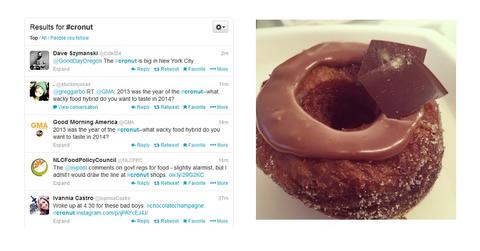Why Twitter is like the cronut: It’s all about the hype
Twitter stock as appreciated rapidly since its recent IPO, but is it worth the price? Has hype inflated market prices beyond intrinsic values?
Dec. 31 2013, Published 12:00 p.m. ET

Twitter stock and the cronut
Let’s compare Twitter stock to the cronut, the hybrid croissant-donut dessert that has driven New Yorkers to wait in line at ungodly hours of the morning. We acknowledge that this is a tongue-in-cheek comparison, but it also serves as a useful real world analogy to understand how the public can attribute too much value to things—whether securities or pastries.
The markets just aren’t rational.
Every single morning, the cronut sells out. If you haven’t been waiting in line at least a half hour before the bakery has opened its doors, you likely will not get a cronut allotment. If you don’t get your cronut from the initial supplier, you could buy it from a secondary market for a much higher price (search “cronut” on Craiglist and you’ll see!) or pay someone to wait in line for you—either way, you’d be paying far above the retail price.
Likewise, those who couldn’t get a piece of the Twitter IPO, which priced at $26, were forced to pay far, far above that in the secondary market. You could say that the underwriters got the valuation wrong… but by a factor of two? If Twitter thought that its stock was worth over $60 per share, where it’s currently trading, why IPO at less than half that?
Twitter’s IPO offered 70 million shares to the public. Let’s say, for example’s sake, that Twitter stock is fairly priced at $60 (it’s currently at ~$64 per share and changing by the second). This means that the company lost out on ($60 – $26) * 70 million = $2.38 billion in proceeds from underpricing the IPO. Look at it any way you want—$2.4 billion is a lot of money. Think about these two questions.
- If Twitter and its bankers really thought the company was worth over $60 per share, would they have IPO’d at less than half that price?
- Does anyone know the value of Twitter better than the company itself and its bankers?
Limited supply
Of the total 555 million shares outstanding, Twitter only IPO’d 70 million shares. To some degree, the relative scarcity of Twitter shares may be propping up the market clearing price. Similarly, with the cronut, because it sells out every day due to a shortage of supply, users are willing to pay far more than for other comparable desserts—even if the other desserts may be just as good or better. The limited supply may even be driving up demand, causing users to pay even more for the goods.
Hype begets hype
The initial frenzy around the cronut caused the media to sensationalize the pastry even more, giving the dessert free press and hyping up its value even more even though its intrinsic value as a pastry shouldn’t change, nor should its value relative to other pastries. “This is a scarce good!” people think. “I’ll totally wait two hours or pay $80 for a donut!”
Similarly, with Twitter, the hype around the name likely drove a large part of its price appreciation, and its initial rise in price likely spurred people to want it more even though this thought pattern is irrational. “Twitter already went up so much! I can’t miss up on further upside!” Does it make more sense to buy high or buy low? Is buying something that appreciated a great deal recently buying high or buying low?
Note that we’re not saying Twitter doesn’t have strong growth prospects, nor are we saying that the cronut is a bad dessert. On the contrary, Twitter will probably grow rapidly, and the cronut is delicious. The question is, are they fundamentally worth it, or has the psychology of hype inflated their respective market prices beyond intrinsic values?
Read on to the next section to see why Twitter could trade up even if fundamentals do not support it.
